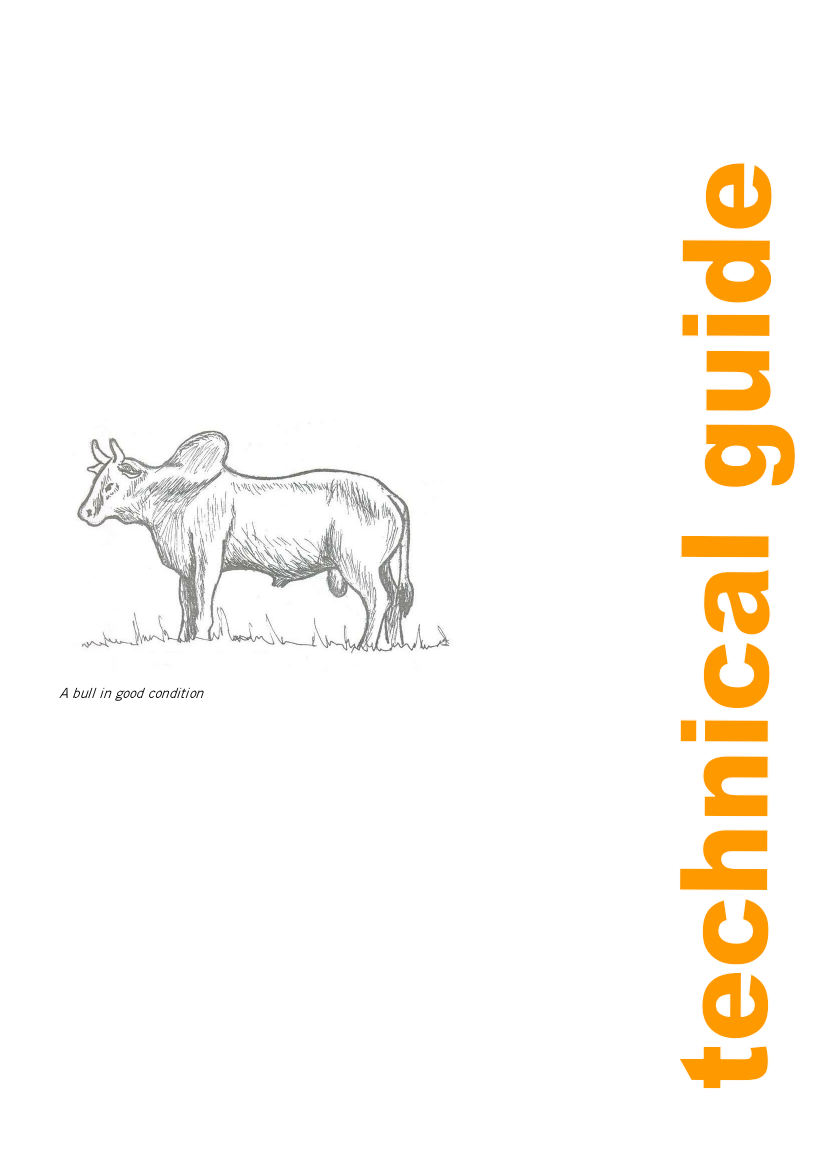
Beef cattle production and management
Practical Action
Bull management and selection
The growing bull is much more susceptible to nutritional stress than the mature bull. When
mature bulls are fed, low energy feeds for prolonged periods, libido and testosterone are
affected much earlier than semen production. The effects of underfeeding may be corrected in
mature bulls, whereas it is less successful in young animals because of permanent damage to
the testis. Obesity and over-feeding reduce libido and sexual activity in bulls, particularly during
hot weather. Mature males should be restricted to a maintenance diet. When not in the breeding
herds, bulls should preferably be run as a separate group in two or three small paddocks where
they can be closely monitored. The number of cows per bull is an important factor as it affects
the calving percentage. A bulling ratio of one bull to 25 cows is recommended. When selecting
a bull for breeding purposes the bull's performance records have to be checked on the basis of
its offspring. Therefore, the performance of its progeny wiII determ i ne its performance as well.
There are other features (body conformation), which can be selected for. Such features include:
Strong and straight (stiletto) legs
The penis and scrotum should not be pendulous
It should have a wide and moist muzzle
The bull should be masculine
A bull in good condition
Before commencement of the breeding season, bulls should be checked for fertility by a
veterinarian.
Breeding soundness evaluation of bulls
A breeding soundness examination predicts the potential fertility of a bull. It is based on an
examination that includes tests for physical soundness, testicular size, semen quality and
in some cases, libidolmating ability. There is a high correlation between scrotal circumference
and quantity of sperms produced. Most importantly, the larger the scrotal circumference the
quicker the bulls daughter reach puberty and start cycling, provided that nutrition is adequate.
22